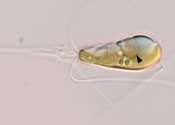Researchers crack mystery of swirling vortexes in egg cells
Egg cells are the largest single cells on the planet. Their size—often several to hundreds of times the size of a typical cell—allows them to grow into entire organisms, but it also makes it difficult to transport nutrients ...









